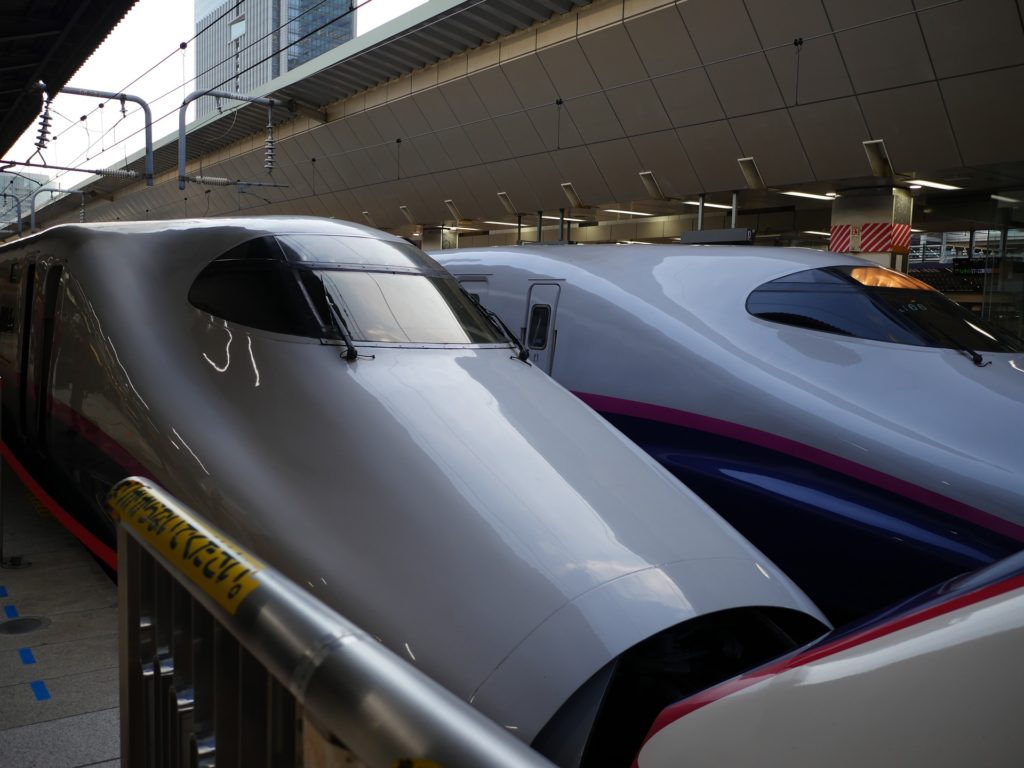Found in the Kitakami Mountains of Iwate Prefecture, bordered by the Pacific Ocean in the east, Kamaishi is a coastal city with a number of must-see natural attractions.
On March 11, 2011, it was heavily devastated by a magnitude 9 earthquake, often referred to as the 2011 Tohoku earthquake or the Great East Japan Earthquake, which was the strongest earthquake to be recorded in Japan’s history. A tsunami followed soon after, with waves that reached as high as 4.3 metres, and left 1,250 of the city’s residents dead or missing, and several schools and structures completely or partially destroyed.
Today, the city is known for its iron and steel industry, and commercial shellfish and fishing production, and continues to work on boosting its eco-tourism.
How To Get There
Kamaishi is about five hours away from Tokyo by train. From Tokyo Station, the Tohoku Shinkansen line can take you to Shin-Hanamaki Station, where you need to transfer to the JR Kamaishi line to get to Kamaishi Station.

Sanriku Railway’s Minami-Rias line provides easy access to Kamaishi, if you are travelling within Iwate Prefecture.
There are also highway buses link Kamaishi to Tokyo, Sendai, and Morioka.
Top Attractions
Sanriku Fukko National Park
Established two years after the 2011 Tohoku earthquake and tsunami, the Sanriku Fukko National Park is a national park along Japan’s Sanriku Coast, extending from Kesennuma (a city in Miyagi Prefecture), through Iwate Prefecture (including Kamaishi), and to Hachinohe (a city in Aomori Prefecture), occupying a total area of 146.35 square kilometres.
With great views of the sparkling ocean, rugged cliffs, and unique stone formations, it is the perfect choice for anyone looking for some peace and quiet, far from the chaotic and bustling atmosphere of Tokyo and other urban areas.
Its beaches, such as the Jyoudogahama and Nami-ita-kaigan, consist of fine, white sand, with vibrant green pine trees all around, and are home to a very diverse marine ecosystem. After a day on the beach, you can try some freshly-caught seafoods, like crabs, shrimps, and sea urchins, for dinner at any of the restaurants and eateries that also offer fantastic views of the waters and landscapes.
Hashino Iron Mining and Smelting Site
A UNESCO World Heritage Site built towards the conclusion of the Edo Period, the Hashino Iron Mining and Smelting Site is the ruins of the Tokugawa-era primitive iron smelting and blast furnace site, where several hundreds of workers produced weapons and arms, cannons, large ships, coins, and other items for different purposes, including wars, trade, and government-related transactions.
After the Meiji Restoration, in 1871, the site was ordered to close and left abandoned. In 1955, the ruins were excavated, and, two years later, were declared a National Historic Site. In 1984, it was recognized for its significant contribution to the local iron and steel industries, and, in 2015, became a UNESCO World Heritage Site.
The ruins are an interesting site to visit for anyone curious what the first blast furnace in Japan and other remains look like today.
Iron And Steel Museum
The city of Kamaishi is considered to be a pioneer in iron and steel making, and the Iron and Steel Museum provides a detailed history of the events that start from the discovery of magnetite in the region’s mountainous area in the 1700s, the rise of Kamaishi as a primary steel producer and its fall due to wars, natural disasters, and other factors, up to the present day, through a film showing, an experimentation room, diagrams, and other aids.
Kamaishi Daikannon
Constructed on a peninsula located south of Kamaishi’s downtown area, the Kamaishi Daikannon is a depiction of Buddhism’s goddess of mercy, Kannon, in the form of a 48.5-meter tall, all-white statue. Founded in 1970, it faces the sea to appear to look after the sailors and guide them on their expeditions.
It is possible to climb up to the hands of the statue through an interior escalator and a long staircase to the 11th floor observation deck, and get a panoramic view of the city and the bay.
The statue’s base is actually a temple, and there is also another temple nearby that keeps numerous statues of important Japanese Buddhism figures in the basement, and is where Buddha’s ashes is enshrined.
Every first Sunday of June, the site observes a festival, and holds a shishi-odori (or deer dance) performance.
Mount Goyo
Mount Goyo is a 1,351-tall mountain that extends across Kamaishi, and two other cities, Ofunato and Tono. In the summer, it offers a nice and pleasant hiking trail to the top, about 10 kilometres long, passing by a couple of shrines and through a dense forest of birch, oak, and walnut trees. As you get closer to the summit, the vegetation starts to change, and you see more and more rhododendrons and other kinds of bushes all over. Once you reach the peak, you can enjoy a 360-degree view of the mountain and its surroundings.
Getting Around
It is very common to explore Kamaishi on foot, as a lot of the city’s sights and attractions are located in the city centre. You may also take the bus or rent a car to reach sites that are farther from the downtown area, such as Mount Goyo and the Hashino Iron Mining and Smelting Site Ruins.
Weather
Kamaishi has a generally moderate climate. During the summer months, the daily average temperature is around 25 degrees Celsius, and August usually records the hottest days when temperatures can go as high as 30 degrees. The rainy season is at its peak in September when the city experiences an average precipitation of 254.7 millimetres. In autumn, temperatures drop to around 10 to 15 degrees Celsius, and the weather is just right for some autumn leaves viewing outdoors. From December to March, the daily temperatures fall below 5 degrees Celsius, and the days are sunny and dry. In spring, daily temperatures are around 10 to 15 degrees Celsius, and expect a few rainy days in April and May.
